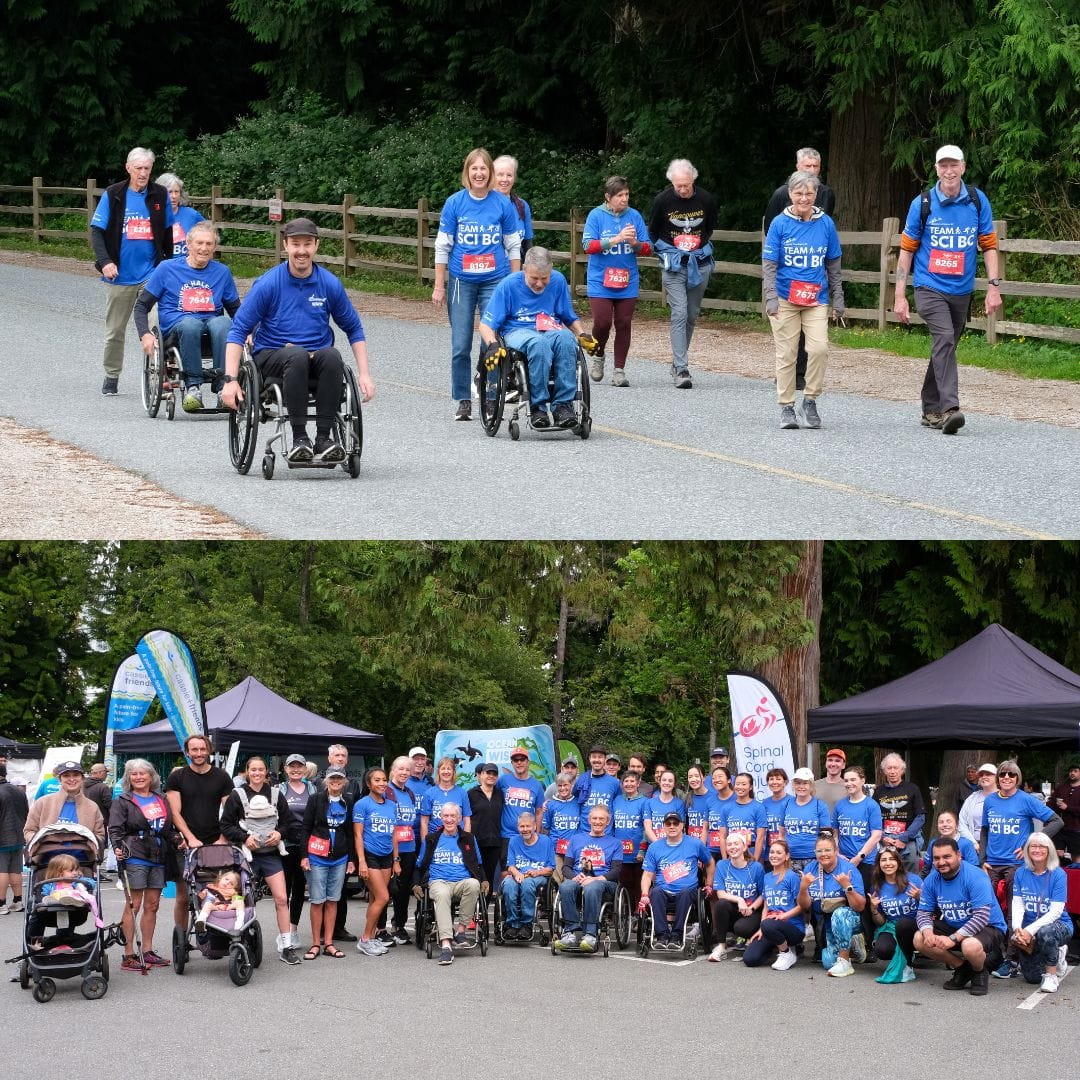Dear Industrial Designers and Engineering Students:
Just… STOP.
We see your shiny, slick concept images, highly produced videos and idealistic student prototypes that swirl around the internet. Your futuristic ideas are shiny and tempting, but they get sucked into the content-hungry media swirl, prompting well-meaning tech and industry journalists to share without much thought. The same clickbait phrases are used over and over: “the future of mobility!” “makes the wheelchair obsolete.” The internet just can’t resist a sexy slow-mo product video, or the idea that is counterintuitive to mainstream stereotypes about disability: a wheelchair as a beautiful object of design!? Tell me more!
Designers and engineers (and for that matter, the well-meaning friends and family of wheelchair users who litter our social media with these pictures) – it’s time to take a break. Sit back and let wheelchair users give you some insight before you sink even more hours into the next high-tech wheelchair idea that will win you a design prize (or your thesis) but never make it to market.
Innovation is important, and we, the wheelchair-using public, don’t want to be left out – so thanks for aiming your talents our way. The wheelchair’s been around awhile and has benefited enormously from bicycle design and materials science in a way that has cranked up the level of innovations in wheelchair design. I’ll admit – I ogle the latest new designs and consider myself a gear snob – as a teenager I doodled wheelchair designs in the margins of my notebooks. I am your ideal consumer.
But did you know that those futuristic concept designs that spring from your computer to an engineering student prize or industrial design conference end up in an endless swirl in the online worlds of actual wheelchair users? They do. Your designs are shared widely, completely unmoored from whatever design brief you started with and create an inevitable sense of expectation and frustration among at least some corners of the wheeling public. “Where is our hover chair?” people ask. “When will this standing off-road rocket chair be on the market? TAKE OUR MONEY!” It’s compounded by the people who love us most: “Look! Isn’t this lovely, you could even get one to match your wedding dress!” or even worse: “Stairs aren’t a problem with futuristic tank tread wheelchair!”

1: Start designing with real wheelchair users in mind.
So many of these designs look like they were dreamed up as a piece of art, with no roots in the reality of the individual who might have to use it. For example, how do you get the Zenith off-road wheelchair TO the outdoors? How would a wheelchair user even transfer into it?
Some chairs don’t even appear to have considered the drive mechanism – how the wheelchair is propelled, such as by hand or battery powered with a motor and joystick. Canadian designer Lawrence Kwok’s Nimbl chair was intended to “look like a valuable piece of furniture and add to the home décor,” but lacks any discernible way of propelling it, without hubs or pushrims for hand propulsion or room for a motor, joystick or batteries if powered. The footrest looks like what you’d find on a barber’s chair, which fails on even slightly uneven ground or when the user has spasticity. Sure, it looks like the slick love child of Eames and Ikea but how in the world do you make it move?
Concept designs like this are beautiful and fine if you’re creating concept art to spur on innovation in the field to better and sexier designs. But if you don’t even bother to include something that essentially defines a wheelchair, you might as well go back to one of those wheeled rocking chair designs from the 1800’s. When I see a chair design like this, it always tells me that the designer has no intention of bringing it to fruition because it’s missing the key features a wheelchair requires.
1.5: Stop designing for the runway, design for the actual user.
Whenever I see these concept images I always wonder if the designer knows anything about the average wheelchair user. How exactly would the user fit the Zenith, an off-road tank-style wheelchair that came out of a partnership between engineering students at the University of Alberta and designer Josefina Chaves-Posse. But wait! You say. It’s clearly for outdoors only! Obviously wheelchair users would not need to use this in a bathroom!
Apparently not – apparently the Zenith chair promises to conquer stairs and make you look like an all-round badass. Except when you have to pee, apparently.

It’s such a fascinating thing that most of these design concepts don’t feature a person in any of them, let alone a person who looks like they might use a wheelchair a lot – someone with paralysis or spasticity, maybe. There’s a reason most wheelchairs have a footplate that looks pretty much the same – a rectangular tray with bars on either side – it’s because our feet rarely do what we tell them to, that’s why we need the chair in the first place. To me, the first way you know that a design concept was never meant for reality or for wheelchair users is the absence of a useful footplate. This barber-shop style one on the Toyota
Seiza takes it in a whole other direction – this one has a footplate for sure, essentially a case that contains your feet, lower legs and part of your knees. It’s named for a Japanese sitting posture that supposedly has advantages… but rules out anyone with injuries over L1 given the level of balance the user would require in that position, anyone wanting to remain seated in their chair when they hit a bump, and how do you even transfer in this thing?
Back in the 90’s Küschall had a popular manual chair called the Rebel that featured a similarly tight backbend at the knee with the footplate tucked under the seat. It was all the rage for a few years because you could turn on a dime, but now it’s completely disappeared due to the contractures that resulted from that severe knee bend.
Some of it intrigues me – I often see my husbands kneeling office chair and wonder if it would be a nice change in position if I could manage to keep my balance in it, but it largely seems to have been designed for the lower back problems of office workers. We’ve got to hand it to them though, it does look like they did some user testing with real wheelchair users.

2: Stop falling in love with every new material or technology
When what you have is a hammer, everything looks like a nail.
When what you have is 3D printer, you’ll think EVERYTHING needs to be 3D printed.
How many 3D printed wheelchairs have you ever encountered? I’m guessing none.
Wait – that’s not quite true. If you’ve ever met Richard Peter, a Peer Coordinator in our GF Strong SCI Resource Centre, you’ve met someone whose chair incorporates 3D printed parts. Don’t get me wrong, 3D printing is the best new thing in industrial design since the Eames chair, and it’s use in rapid prototyping and the ability to design light, custom pieces has rocketed industrial design forward. Richard has the latest Elevation Wheelchair, designed by Vancouver engineer and researcher, Dr. Jaime Borisoff, himself a person with SCI. Whereas the 3D printed part on the new Elevation model solves a key problem of previous models while bringing the weight down – oftentimes new materials or technologies are featured in a new design just for the cachet, not because it’s something that really helps further wheelchair design! Case in point is the GO wheelchair, by London design firm Layer.
Last year you couldn’t spend a moment on the internet as a wheelchair user without seeing this concept somewhere. It had everything these industrial design concepts need: sexy slow-mo video? Check. Highly designed marketing materials featuring faceless humanoids in the chair instead of real people? Check. Puzzling use of new material for dubious benefit? Double check.
The centrepiece of the GO design is a 3D Printed custom seat and back piece, forming a space-age hexagonal mesh structure that supposedly makes it lighter and more supportive than other chairs (with the implication of cost savings). As great as a custom 3D printed seating system would be, 3D printing still isn’t at a point where it can match existing lightweight aluminum chairs for cost and weight, says Dr. Borisoff, and this design is only printing the seat and back orthosis and relies on a metal insert for strength.
Borisoff thinks that recent breakthroughs in 3D metal printing means that some of these issues might be overcome in time, but for the moment, “it’s hard to compete with a bent metal tube for strength and cost.”
Save
Save[vc_column_text css=”.vc_custom_1516229934459{margin-bottom: 0px !important;}”>3: Stop comparing your design to hospital wheelchairs – short term clinical settings aren’t your target market, and we’re on to you. The GO Wheelchair designed by Level design in the UK conspicuously compares this supposedly 3D printed, lightweight and fully custom wheelchair with the obvious alternative – the boxy Everest & Jennings steel hospital wheelchair. Because that’s what most wheelchair users use, right?
WRONG. A single step inside a rehab hospital (or for that matter, the western world) would have told you that. Modern businesses and street corners are graced with a colourful and fascinating variety of lightweight wheelchairs – from the paradigm-shifting Ti Sport titanium chairs to the super light carbon fibre Panthera to the 90’s era Boing suspension chair and the dynamic Elevation chair, to the permobil power chairs that elevate, tilt, extend straight out like a bed, and take corners like a pro. The wheelchair market is a lucrative one, and we like to look good and be as functional as possible – we get that!
But that means if you want to market or share your prototype or concept design, comparison to the 1950’s era steel folding behemoth made by Everest and Jennings and slowly going out of style in the average hospital has nothing to do with your target market or the chairs we use today. Comparing your design to such a one-size-fits-most mass market chair makes me sceptical that you really understand your user, or wonder if your concept was meant to appeal more to your industrial design colleagues.

4: Your designs often betray your harmful and limiting stereotypes of disabled people.
There’s all sorts of great writing about how design reveals the experiences of the designer, but from what I see in industrial wheelchair design concepts, all I see is how limited, dependent and weak designers think we are.
Take Caspar Schmitz’ Transformable Wheelchair Concept – which looks so much like a bike trailer from space I have a hard time figuring out where I would sit. In Caspar’s world, people who use wheelchairs have no legs and are pushed around like babies in a pram – supposedly the drive system is controlled only from the bar on the back of this chair (stroller style) and the seat is so low we’d be eating at the kids table for the rest of our days.

Or let’s talk about how the wheelchair with attached baby stroller (with the catchy name of the Stroller Adapted Elderly Wheelchair by design students) is marketed to “help grandparents connect to the next generation.” As a person from the “sandwich generation,” I dig the spirit of this concept, but the design brief just KILLS me as a wheelchair user. So many parents who use wheelchairs search for strollers that they can propel independently, and as of yet no affordable widely-available design has surfaced. But okay, design this! People need it. But why assume that the only wheelchair users who need a stroller on the front are seniors or grandparents? Why leave no propulsion mechanism but include an attendant controlled hand brake? This design looks more like the wheelchair user is an appendage to the stroller than a functional device in its own right. With an aging population, sure this is something to consider, but man. What a lost opportunity that I have to think is rooted in the invisibility of people with disabilities as parents.

5: Stop designing for the 1%.
Don’t we all love to fantasize about the technology we’d have if cost wasn’t a factor? I’d already have that $10,000 mountain bike-handcycle, thankyouverymuch. But sadly for most wheelchair users, fantasy doesn’t get us from A to B. Or to the toilet. When manual chairs go for $4-6,000 every 3-5 years, and power wheelchairs are $12-18,000 (or more) every 8-10 years (if you’re lucky), the vast majority of people with disabilities can’t even fantasize about most of the prototype chairs out there, like this (footplate-free!) design innovation by Yamaha Motor Company and Japanese fashion designer Tamae Kirokawa, called 02Gen is aimed at the discerning wheelchair user with thousands to spend on a chair that could turn her into a “translucent ice sculpture of a swan…” for one day of her life.
Featuring “white embossed leather, skin toned ivory colours for frame and wheels” and newer Taurs design with power-assist wheels and, apparently, the least comfortable backrest on the planet. But hey – it shows off that backless bridal gown, so it’s all worth it.
My sarcasm is obvious, I know. But if this much technology and design savvy was applied to a wheelchair that was beautiful, featured power-assist AND had half a chance of being covered by major insurance payors and government agencies like the US FDA, then I’d be the first to applaud. Chairs that don’t meet these crucial reality checks are only ever available to the very wealthy who can pay out of pocket for it and get around medical device regulations in major markets.
Or again, they aren’t designed for wheelchair users, they’re designed for industrial designers.

The Scewo, a power wheelchair design project out of a Swiss institute of technology that was seemingly everywhere a few years ago has at least made it to the commercialization stage – and good for them! Even better, it has an actual footplate, a drive mechanism and speaks to a design brief that actually solves a problem: stairs, the final frontier. These Swiss design students are well on their way to what might be a real live innovation in wheelchair technology, but it’s a great example of how out of reach some of the best ideas can be.
6: DO SOMETHING ALREADY.
The most frustrating part of seeing all of these design concepts is knowing they will NEVER. NEVER make it to market. Most designs are so idealistic, costly and overbuilt, they have no chance of succeeding in a market 100% dependent on FDA approval and insurance (public or private) reimbursement. Like it or not, commercialization is dependent on your product being viable in the REAL market, not just in your browser window. It’s nice to see wheelchairs seen as a design object and all but it doesn’t mean anything if those fancy ideas and design features never make it to market.
One such design that really annoyed me is the Mobi foldable power-assist manual wheelchair, a 2011 design concept by a design student out of Monash University in Melbourne, Australia. This one, while puzzling, shows some really interesting innovations. There’s some great ideas here – power assist is the big new thing for manual chairs, enabling power chair users a more versatile and vehicle-friendly option and helping manual chair users save our shoulders. Lightweight, stylish folding wheelchairs are rare, and a power assist embedded into the wheel (especially if it looked like this!) would be amazing. The self-balancing Segway-like technology seems like a brilliant idea but it’s been out since 2011 and went nowhere. It’s a great design, so why does it annoy me? Because it was just a design that did nothing for me but tantalize me with ideas in a product that will never be made.





